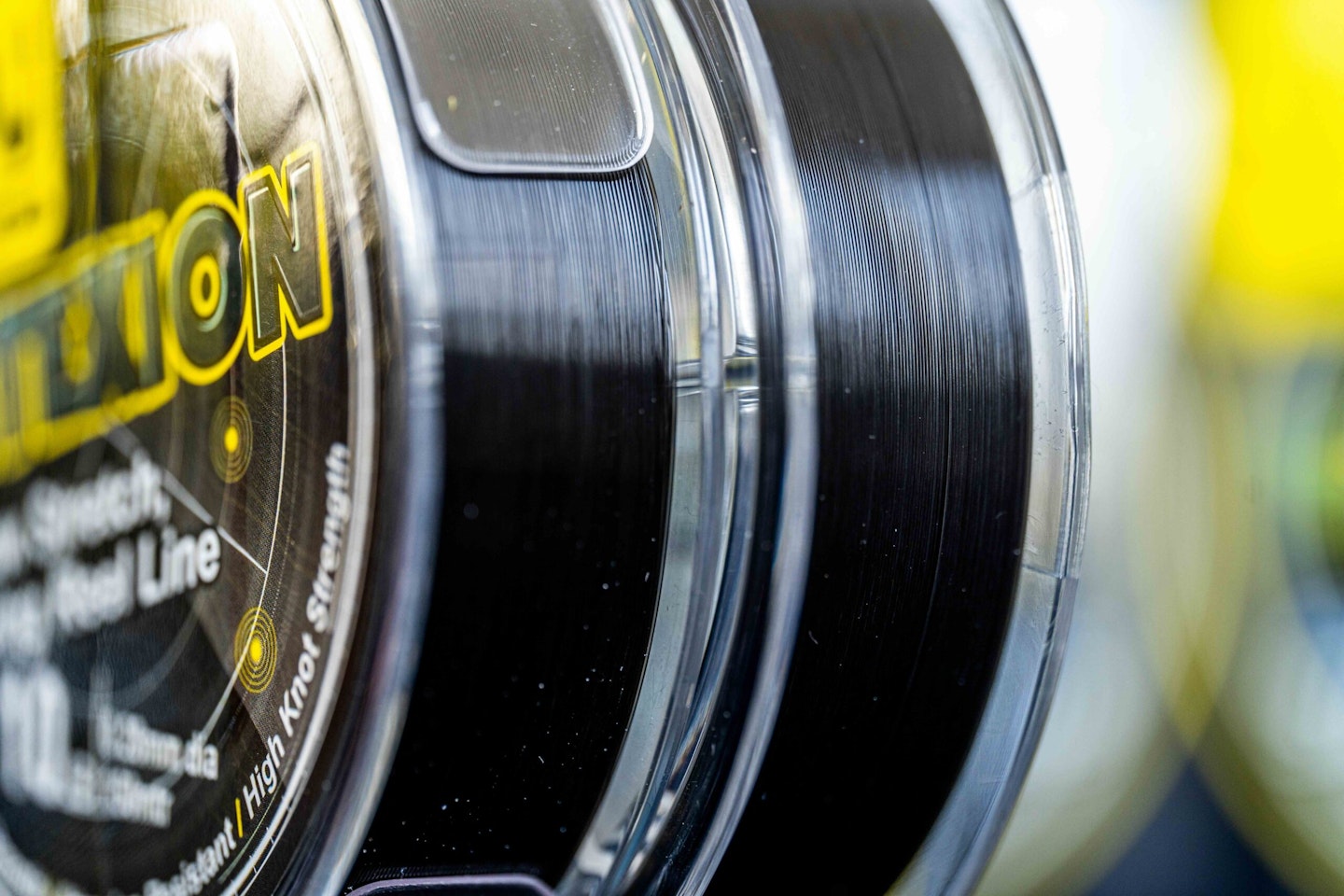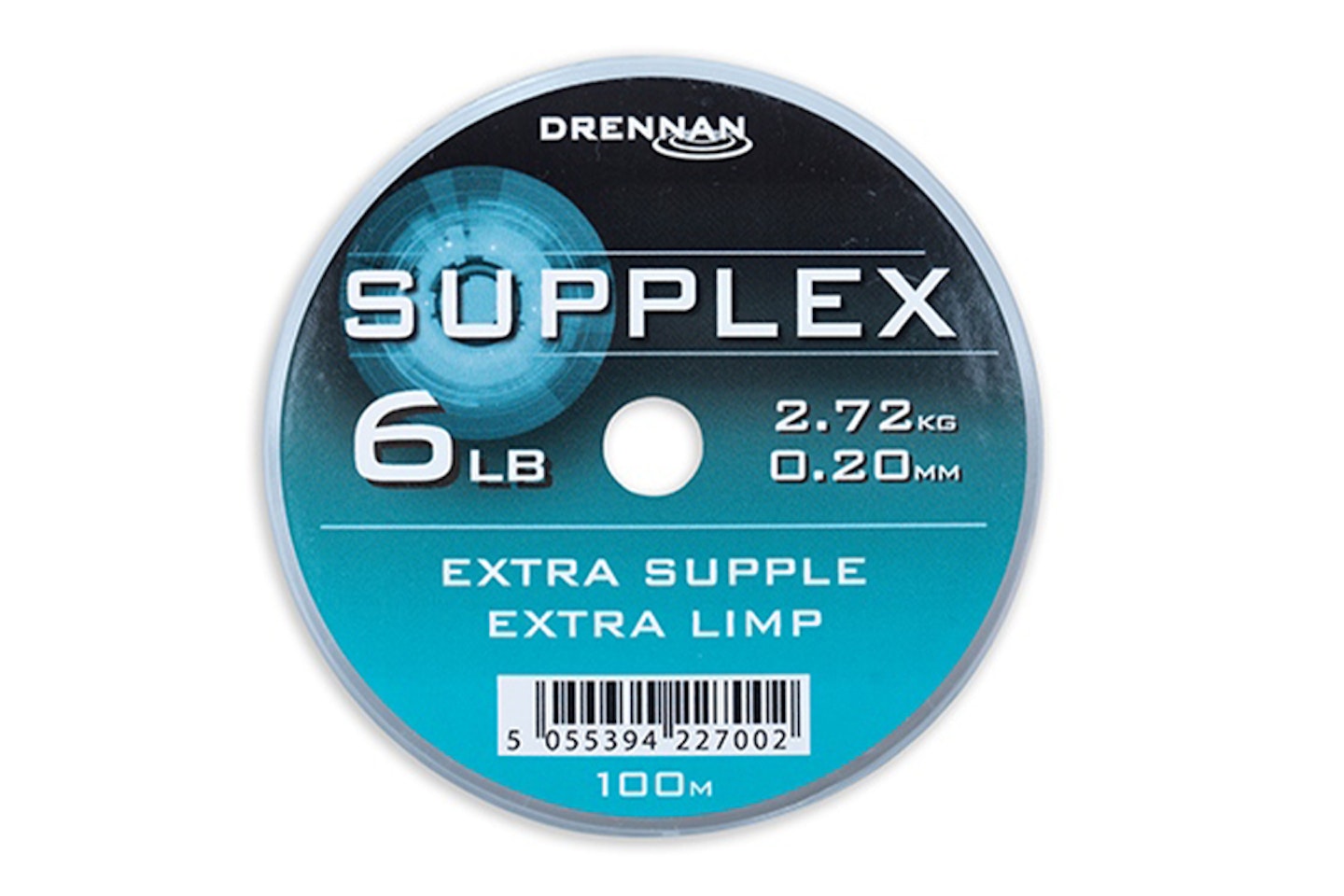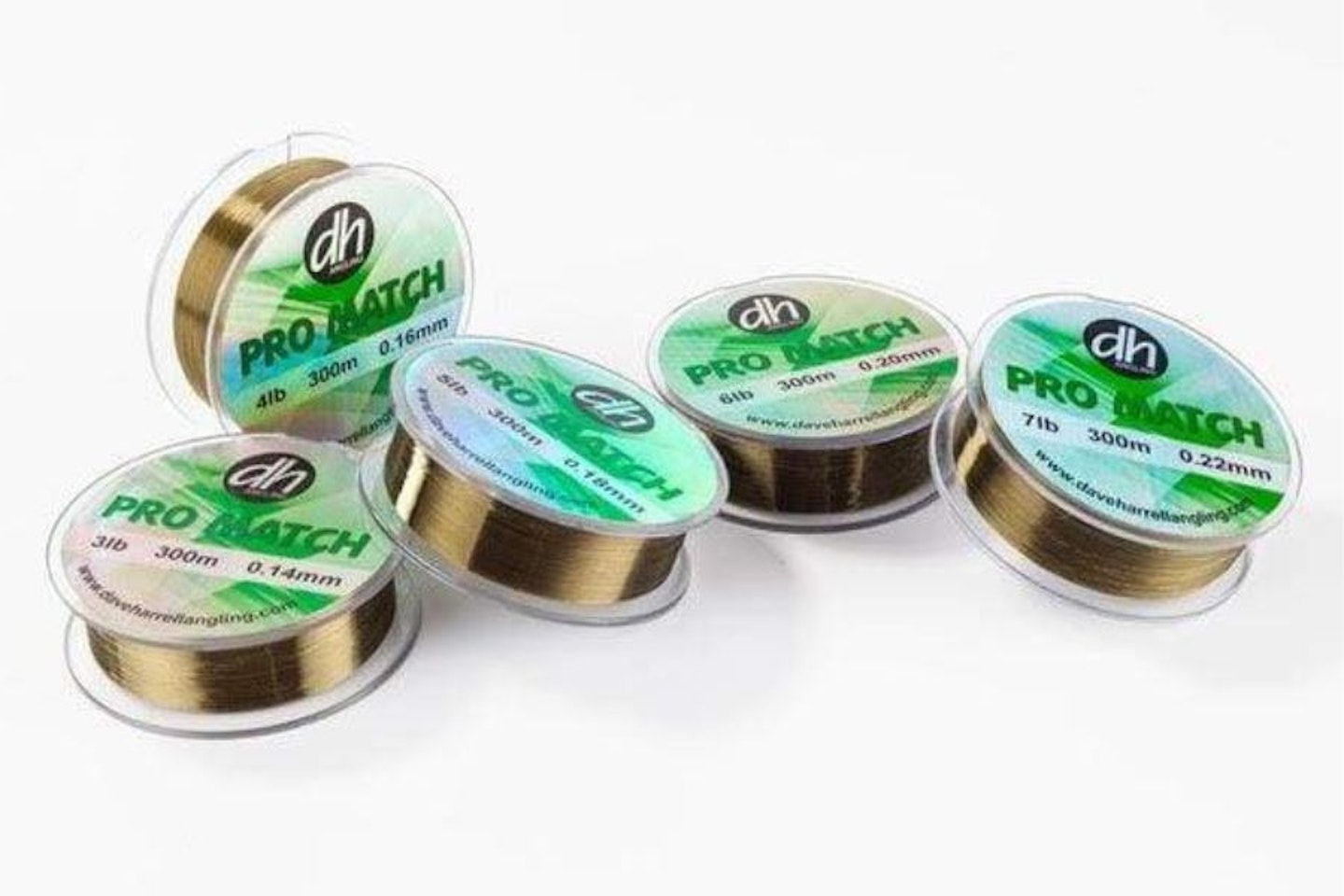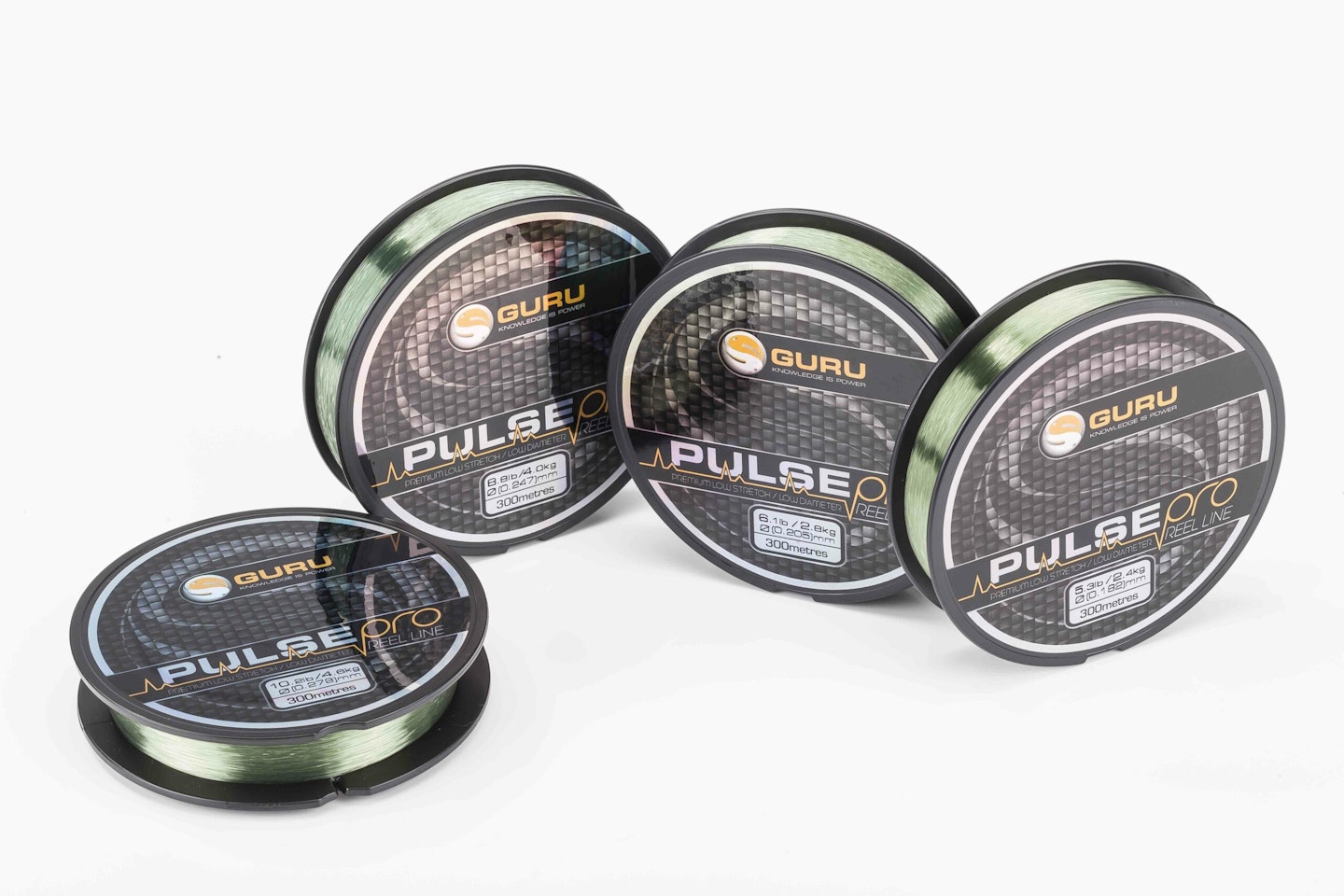Since its introduction earlier this year, Nufish’s Detexion line has caused a big stir, and loads of anglers are now switching to using it. And not just for their feeder fishing, but for floatfishing as well.
There have been "All-round" lines introduced before but they just never really hit the mark, they would excel in one area but would be slightly lack-lustre in another, so how well will the latest Nufish addition fair?
With so many people raving about it, is it really that special? Luckily, I received a few sample spools just before its release, so I feel I’m in a great position to tell you more about it.

www.ebay.co.uk
Detexion is a super low-stretch sinking reel line which maximises the connectivity between you and the fish. It gives superior bite detection when used with a feeder and fast line pick up when using float tactics. It has a super smooth surface which is hard wearing but supple, and with a low visibility coloration and high strength to diameter ratio Detexion is suitable for all types of applications.
Available in a range of breaking strains from 3lb - 10lb on 150m spools.
Pros
- Sinks incredibly quickly
- The dark grey colour blends in nicely in the water
Cons
- Only available in 150m spools, so may require backing in lighter breaking strains
Initial thoughts
First, it’s low stretch. This is an attribute known to be of big benefit when conventional feeder fishing, as it allows for more accurate casting and increased bite detection – hence the name Detexion.
It has also been designed as an alternative to braid, which can be too harsh when fishing at close range, is often tricky to sink, and is banned on many waters. The line is very smooth, beds onto the reel really well, and the curling some lines can suffer from with early use is all but eliminated!

Key features
The stretch reduction is achieved by using a hard coating that boasts a number of other benefits as a by-product. Not only does it prevent knots from bedding in too tight and cutting into themselves – meaning the line has a high knot strength for its diameter – but the coating is super-smooth so it casts exceptionally well and sinks quickly, almost slicing through the water.

How did it perform?
I first fished with this line during the winter and chose the 4lb breaking strain for my light skimmer work with small hooks and a cage feeder. I was very pleased with it, but it didn’t blow me away – it performed much like most other ‘feeder’ lines I’ve tried.
It was only once the weather warmed up, and I used it for Method feeder and pellet waggler fishing, that I got really excited.
With the Method, I’ve found my feeder lands better on the water with less of a slap. I think this is ordinarily caused by the feeder being pulled back towards me due to the spring typically found in other lines. Casting up to islands is an absolute dream – my feeder now lands exactly where I’ve clipped up, rather than in the reeds if I hit my clip too hard.
The 6lb Detexion is perfect for this, and it’s a lot stronger than you’d think, comfortably handling fish into double figures when matched to a soft rod.
On the pellet waggler, its low diameter keeps me in direct control of the float and the reduced stretch helps to set the hook and connect with the fish quicker.
Although it’s a sinking line, it doesn’t sink overly fast or deep, meaning a minimal bow to pick up on the strike. For this style of fishing, 4lb has seen the most use, stepping up to 5lb on venues with bigger fish and even 6lb at Boddington, which in hindsight was probably stronger than I needed to use, despite the 12lb average size of the fish caught.
The only breaking strains I have not tried yet are 3lb, which would be great for conventional waggler work, 8lb, for very big fish on the feeder, and 10lb, which I reckon would make an ideal shockleader line.

Any downsides?
Fishing is a very subjective sport, and as such, there will be people who both love and loathe this line. However, I would be hard-pressed to find any fault with it. It is a fantastic line for both waggler and feeder fishing, and it does exactly what it has been designed to do. My only real gripe with the line is that it comes on 150m spools. While this is great for the thicker diameters, it often requires some backing on the thinner ones, which makes it difficult to turn the line around on the spool as it gets older. However, for £5.99, you could probably stretch to buy a new spool when the time comes to refresh it.

www.ebay.co.uk
Detexion is a super low-stretch sinking reel line which maximises the connectivity between you and the fish. It gives superior bite detection when used with a feeder and fast line pick up when using float tactics. It has a super smooth surface which is hard wearing but supple, and with a low visibility coloration and high strength to diameter ratio Detexion is suitable for all types of applications.
Available in a range of breaking strains from 3lb - 10lb on 150m spools.
Pros
- Sinks incredibly quickly
- The dark grey colour blends in nicely in the water
Cons
- Only available in 150m spools, so may require backing in lighter breaking strains
As you can imagine, if the only downside to a line is the amount available on a spool then you would be correct in thinking it is a very good product. The appeal of this line is that it is very good at everything. If you're an angler with limited kit, you can load a reel with 5-6lb Detexion and use it on most waters for most species, from trotting a float for chub to chucking a method out for carp and it will perform admirably.
The word ‘hype’ normally implies exaggeration, but that is not the case with Detexion. In fact, I’d go so far as to say that everything you’ve heard about it is probably true.
Our pick of the alternatives
Best in class float fishing line

www.fishingtackleandbait.co.uk
One of the best float fishing lines available is Drennan Supplex. What makes this line so good is its really low diameter and super supple nature. These two features make casting floats far easier thanks to the reduced resistance through the rod rings, allowing you to use a lighter float and still achieve good distances.
The line is really strong, so you can often use a slightly lighter mainline than you normally would. Its clear design makes fish less wary of it and its low stretch gives you instant contact to the float when you strike. This is my first-choice reel line for the majority of my float fishing.
Available in 100m spools: 3lb (0.14mm)-12lb (0.28mm)
Pros
- Very supple, great for casting.
- Low diameter.
Cons
- Not quite as abrasion-resistant as some others available, but still very strong.
Best float fishing line for rivers

www.fishingtackleandbait.co.uk
If there is one angler who knows about float fishing on rivers it’s Dave Harrel, and his Pro Match Line is designed for just that, so you know it will be perfect for the job. Designed to perform to exacting standards of top matchmen, the line has a very low memory to ensure the speed through the strike puts you in direct contact with the fish, rather than striking out the stretch.
The Pro Match Line floats superbly well, giving you full control when fishing running water, whether you need to stay in contact with a waggler or mend the line behind a stick float. The line has very low diameter for its breaking strain and is quite robust, so will stand up to some punishment too. The line will perform well on a stillwater too, but is far better on flowing water.
Available in 300m spools: 3lb (0.14mm) – 8lb (0.24mm)
Pros
- Perfect choice for float fishing on rivers.
- Low memory and stretch increases chance of hooking up when long trotting.
Cons
- A 100m spool might suit some anglers better.
Best pellet waggler float fishing line

www.total-fishing-tackle.com
The low stretch Guru Pulse Pro line is a very high tech, modern line created to stand up to the rigours of today’s commercial and natural water angling. The line is very versatile and will cover all your float fishing requirements, whether you want to cast a big pellet waggler out or fish more delicately with a more traditional waggler.
The smooth profile and low diameter allows for more accurate and effortless casting, which is ideal when chucking a waggler to mug carp and the low stretch allows you to hit the quick bites this method often produces. The line is resistant to wear and damage, so you can leave the line on the spools for ages without it degrading, great if you catch loads of fish and need reliability. The spool also comes with a handy 150m sticker so you know when you’re halfway through.
Available in 300m spools: 5lb (0.18mm) – 10.2lb (0.27mm)
Pros
- Perfect for commercials.
- Robust, resistant mainline.
Cons
- Not the best line available for flowing water.
Author Dan Webb first became involved in angling journalism in 2015 and has worked as Tackle Tester at Angling Times since April 2021. He is a fanatical all-round match angler and former England Youth International.
